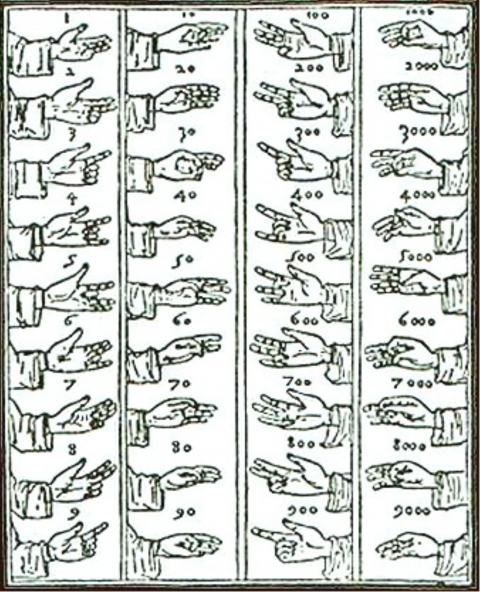You are using an out of date browser. It may not display this or other websites correctly.
You should upgrade or use an alternative browser.
You should upgrade or use an alternative browser.
WI: A Different Numeral System Is Used Worldwide
- Thread starter Rishi
- Start date
Saphroneth
Banned
Quite a lot of the world uses base-two. (Admittedly, it has to convert back into base-ten for most of us squishy humans.)Most of the world uses the base-ten numeral system. But what if most of the world used a different numeral system (like base-three or base-six, for example)? How would the world be different if a different numeral system was used worldwide?
Base three or base six systems are unlikely. Most numbering systems that have survived in major civilizations have ultimately been based on counting human digits (base ten, base twenty, etc).
Also base 5.
The exceptions to 'fingers' are base 12 (which is deeply imbedded Europe, especially Britain*) and base 60 which the Babylonians used, hence astronomy, geography and time.
* examples: 12 inches to a foot; ounces in a pound (troy); units in a dozen, dozens in a gross; pennies to a shilling; etc.
from what i Understand
there exist Base 4, 5, 10, 20, 60(This why Clock use 60 Minutes...)
there exist Base 4, 5, 10, 20, 60(This why Clock use 60 Minutes...)
Also base 5.
The exceptions to 'fingers' are base 12 (which is deeply imbedded Europe, especially Britain*) and base 60 which the Babylonians used, hence astronomy, geography and time.
* examples: 12 inches to a foot; ounces in a pound (troy); units in a dozen, dozens in a gross; pennies to a shilling; etc.
We can also count the spaces between our fingers, but the only cultures that did so in practice were a few nomadic Native American tribes in California and Mexico.
Some linguists suggest that the ancient Indo-Europeans originally used a base-8 system as well due to the similar sounding roots of the words "nine" and "new," suggesting that nine was adopted later...
Base 12 actually makes a lot of sense, since the fact that 12 is divisible but 1, 2, 3, 4 and 6 means that numbers are a lot easier to divide and multiply in your head, meaning humans will naturally be better mathematicians.
Also maybe why base 60 was in vogue among the Babylonians; it is divisible by one through six.
12 - because thats what we have: 10 fingers and 2 legs.
Actually, that's even simpler : count the phalanx of every finger save thumb. (You know, as seen from palm).
12.
It also work for base 60.
Count every phalanx of your major fingers, 5 times (basically as much times you have fingers on the other hand).
You'd admit it's easier to count this way
Actually, that's even simpler : count the phalanx of every finger save thumb. (You know, as seen from palm).
12.
It also work for base 60.
Count every phalanx of your major fingers, 5 times (basically as much times you have fingers on the other hand).
You'd admit it's easier to count this way
Harder to express numbers with gestures though.
Roman comput

That's base ten, and how is that related to phalanx-counting? If the method of counting (phalanx) doesn't apply to gesture, I don't see how it would get picked up by primitive human. I would hazard to guess that base-12s are developed as calender (12 months a year isn't hard for primitive human to figure out) usage was extended to other mathematical usage.
---
Off-topic, but are all of you capable of bending your little finger with ring finger extended? Many around me can't and I can only do it with one hand.
You argued that gestures couldn't represent huge numbers, I pointed you that they can. (Also, don't quote pictures, please)That's base ten, and how is that related to phalanx-counting?
It's an exemple on how a similar method can be used with a base 12.
Because primitive humans are too primitive to come out with another hand comput than base-10?If the method of counting (phalanx) doesn't apply to gesture, I don't see how it would get picked up by primitive human.
It's more the reverse : with a same system counting (present as well in Mesopotamia, Ancient Europe and China) you can end with base-12, base-60, and other derivatives.I would hazard to guess that base-12s are developed as calender (12 months a year isn't hard for primitive human to figure out) usage was extended to other mathematical usage.
I don't say that moon observation didn't strengthened the use, at least symbolically, but the use of 12 for them is essentially tied up with the division of year on them (even the hardcore decimal revolutionnary calendar ended up with 12 months).
It's not as, furthermore, base-10 and base-12, were mutually exclusive : for a good part of Middle Ages, the second was used popularly : not only for money but for mental representation (For exemple, when it was about giving an approximate age, people went with 24, 36 or 48 rather than 30, 40, 50)
Well, of course.Off-topic, but are all of you capable of bending your little finger with ring finger extended? Many around me can't and I can only do it with one hand.
It's not like Dexterity was really a fix stat furthermore, you can make your fingers more flexible.
Share: